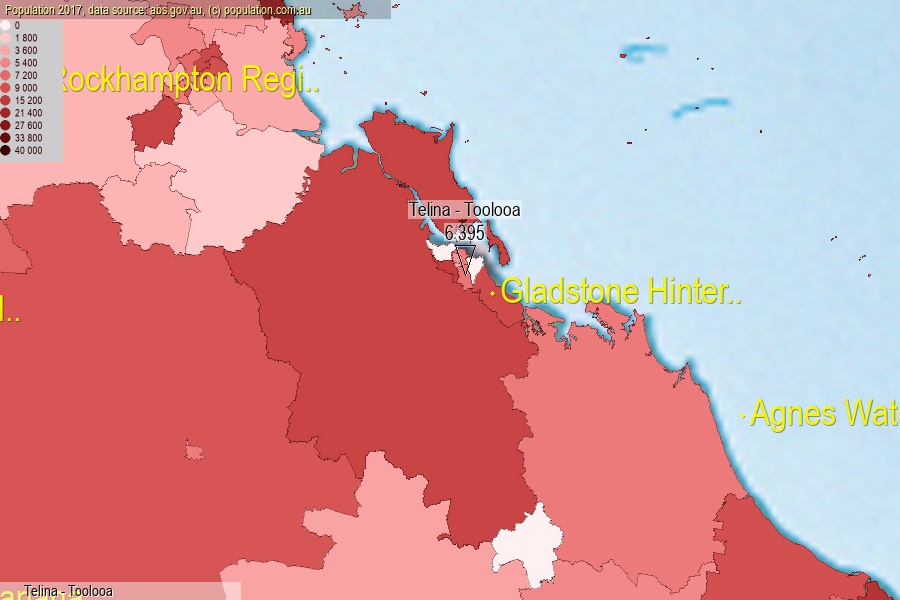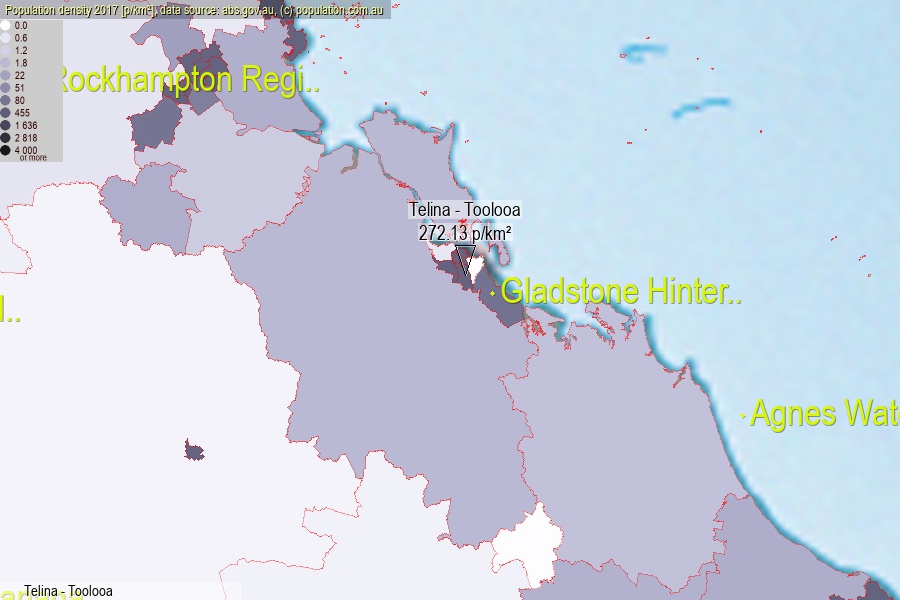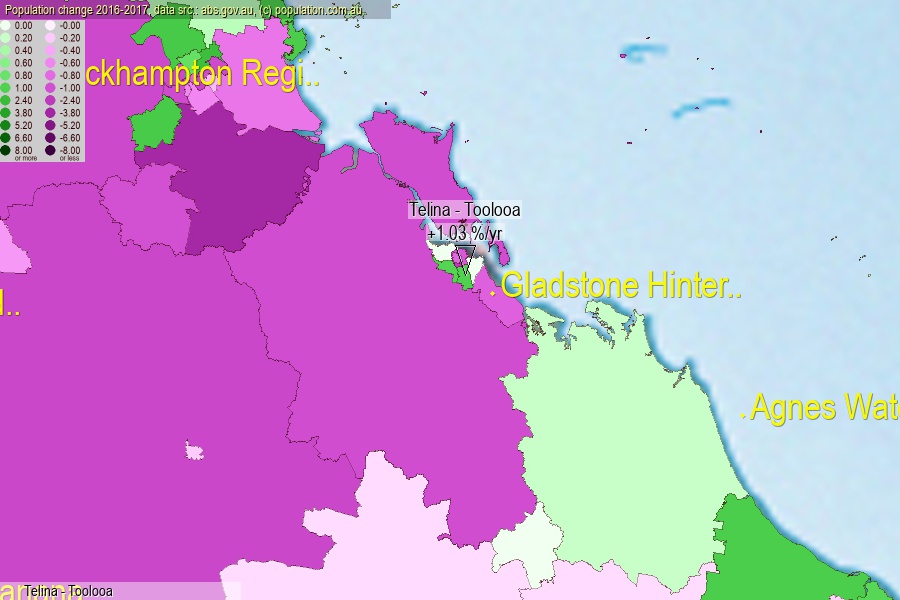 population.com.au
population.com.auLast official estimated population of Telina - Toolooa (as Statistical Area Level 2) was 6 395 people (on 2017-06-30)[2]. This was 0.03% of total Australian population and 0.128% of QLD population. Area of Telina - Toolooa is 23.50 km², in this year population density was 272.13 p/km² . If population growth rate would be same as in period 2016-2017 (+1.03%/yr), Telina - Toolooa population in 2025 would be 6 940. [0]



Click to enlarge. Telina - Toolooa is located in the center of the images.
Population [people], population density [p./km²] and population change [%/year] [2]
View borders » (new window) [4]
[2001-2002] +3.09 %/Yr.
[2002-2003] +1.56 %/Yr.
[2003-2004] +2.06 %/Yr.
[2004-2005] +0.85 %/Yr.
[2005-2006] +2.31 %/Yr.
[2006-2007] +5.52 %/Yr.
[2007-2008] +6.85 %/Yr.
[2008-2009] +5.22 %/Yr.
[2009-2010] +1.02 %/Yr.
[2010-2011] +8.45 %/Yr.
[2011-2012] +3.79 %/Yr.
[2012-2013] +3.13 %/Yr.
[2013-2014] +3.11 %/Yr.
[2014-2015] +0.76 %/Yr.
[2015-2016] -0.16 %/Yr.
[2016-2017] +1.03 %/Yr.
[0] Calculated with linear interpolation from officially estimated population
[1] Read more about SA2 and Australian Statistical Geography Standard (ASGS) on abs.gov.au
[2] Population data from Australian Bureau of Statistics (Population and density: 2017; change: 2016-2017)
[3] Digital Boundaries: Australian Statistical Geography Standard (ASGS) 2016.
[4] Border coordinates are simplifyed using Ramer-Douglas-Peucker algorithm.